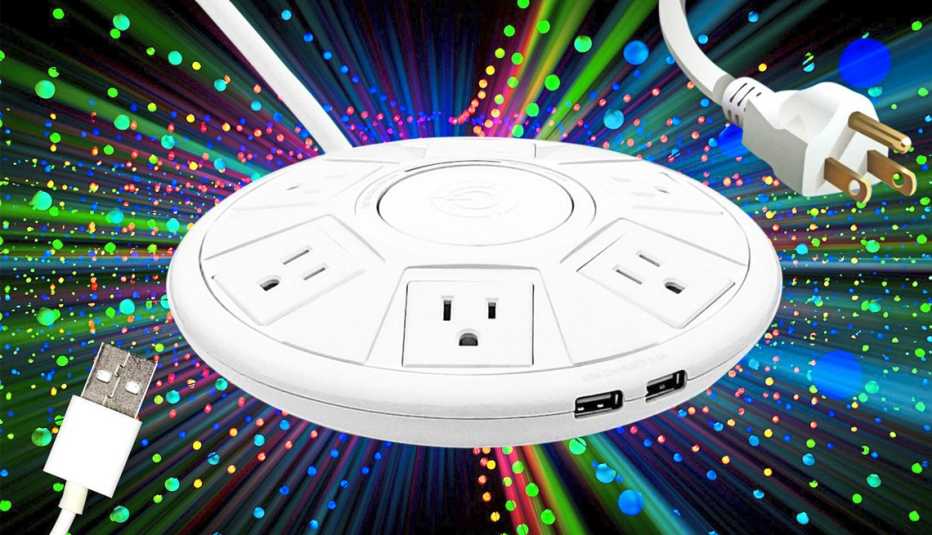Staying Fit
You may be shelling out big bucks to your internet service provider (ISP) but not getting anywhere near the speeds you’re paying for.
You probably count on fast internet for virtually everything these days, from bargain shopping and online banking to following the news, streaming movies, videoconferencing and working from home. In 2016, long before the pandemic made high-speed internet access a necessity to stay connected, the United Nations declared unfettered internet access a basic human right.


AARP Membership— $12 for your first year when you sign up for Automatic Renewal
Get instant access to members-only products and hundreds of discounts, a free second membership, and a subscription to AARP the Magazine.
Are you getting what you paid for?
The only way to know for sure is to use speed-test websites that instantly analyze your connection, then follow up with ways to optimize the wireless coverage throughout your home.
What internet do you have?
Dial-up. The slowest gateway to the internet was many homes’ original connection over the same copper landlines they used for telephone service. About 0.2 percent of U.S. households were still using dial-up alone in 2019, according to the Census Bureau.
Digital subscriber line (DSL). This became the next generation of internet access from phone companies. It uses phone lines but provides faster speeds and allows simultaneous use of the phone.
Satellite. This type of wireless broadband, beamed back and forth from satellites orbiting the earth, is often the only alternative in more rural areas. About 6.5 percent of U.S. households were using it in 2019.
Cable modem. Cable-television companies use their coaxial cable wires to provide internet through the same lines that supply your cable TV, and you can use both at once.
Fixed wireless internet. A Wi-Fi hot spot relies on the same technology, but this option uses 4G LTE or 5G cellphone towers to provide cellular internet at one address.
Fiber optic. Thin glass or plastic fibers bundled together in a cable use laser light to move packets of data and provide the fastest internet speeds at present. Nearly 45 percent of the homes in America have access to this service.
“It is important to know what internet speeds you’re actually getting, not just to ensure that you’re getting what you paid for, but also to be able to fix any bottlenecks between the network router and your phone, laptop, TV and other connected devices,” says Avi Greengart, president and lead analyst at Techsponential. The northern New Jersey firm offers research and advisory services to technology companies and retailers.
You also want to ensure that your internet connection can support multiple devices because you likely have several on your wireless network, he says. And make sure it can handle smooth video calling.
Ten or 15 years ago, you may have started out with your laptop or tablet connected to Wi-Fi. But now you’ve probably unwittingly slipped in a side door to smart home technology as your smart garage door opener, light bulb or plug, robot vacuum, speaker and thermostat compete with a smartphone or two, a smart TV and a video doorbell that you added soon after your computer.
Are you paying for more than you need?
“The FCC says 25 megabits per second [Mbps] is all you need for it to be ‘broadband,’ but I’d argue 100 Mbps downloads is the way to go and quadruple that for a family,” says Eric Griffith, features editor at PCMag.com.
Know that more speed-intensive applications, such as 4K video streaming and online multiplayer gaming, require considerably more bandwidth than reading email or browsing the web. But you may be paying for more than you need if you’re buying an expensive tier of service from a cable provider and don’t have other companies vying for your business, Griffith says.
“The savings comes when people live in an area with multiple broadband ISPs” to make prices competitive, he says. Seventeen states restrict municipalities from offering their own broadband, like Chattanooga, Tennessee, did in 2010 via the city-owned Electric Power Board of Chattanooga, making it the first city in the U.S. to build a gigabit fiber network for its homes and businesses.
How to conduct a speed test
Several free speed tests are available to help you assess whether you’re receiving the internet speeds your service provider promised, Griffith says. Many have a large Start or Go button to click on, and a test shouldn’t last more than a few seconds.



































































